If you have installed new RAM but it is not showing on your Windows computer, this article will help you fix this issue. Usually, we upgrade RAM to increase the system’s performance. However, the system performance also depends on other hardware, like CPU, SSD, etc. Upgrading RAM can also boost your gaming experience. Some users noticed that the installed RAM was not showing up in Windows 11/10. If this is the case with you, you can use the suggestions provided here.
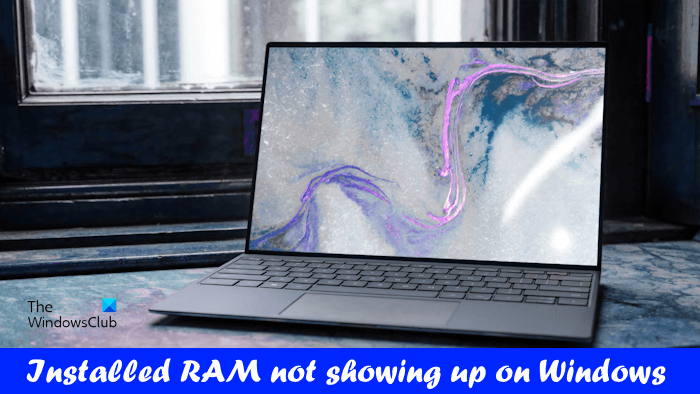
Installed RAM not showing up in Windows 11
The following suggestions will help you if the installed RAM is not showing up on your Windows 11/10 PC.
- Is the installed RAM compatible with your computer motherboard?
- Check RAM status in BIOS
- Reseat RAM
- Install RAM sticks in the correct order
- Check for memory limit
- Update or reset the BIOS
- RAM might be faulty
Below, we have explained all these fixes in detail.
1] Is the installed RAM compatible with your computer motherboard?
When purchasing a new RAM, it is the most important point that every user should consider. The new RAM should be compatible with the motherboard on which it is to be installed. Make sure that you have purchased the right RAM stick(s). You can visit the official website of your motherboard manufacturer to know the compatible RAM.
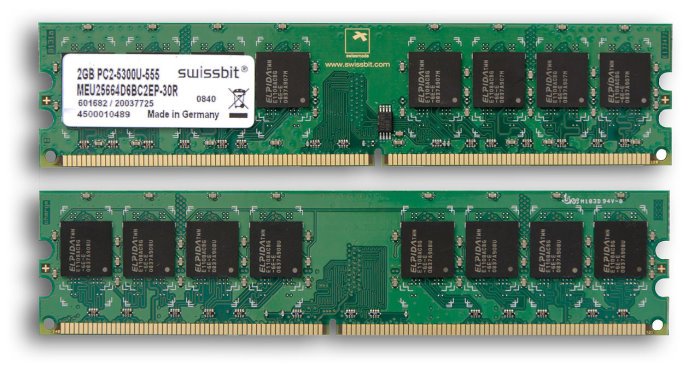
If the RAM sticks you have purchased are not compatible with your motherboard, you need to replace them.
2] Check RAM status in BIOS
You can also check the status of your RAM in BIOS. Enter your computer BIOS and see if the installed RAM is showing there. If your computer BIOS is showing the installed RAM, you need to try some other fixes to resolve the issue.
If the BIOS is not detecting the RAM stick(s), the RAM stick(s) may be faulty. However, we recommend trying all other fixes before jumping to the conclusion.
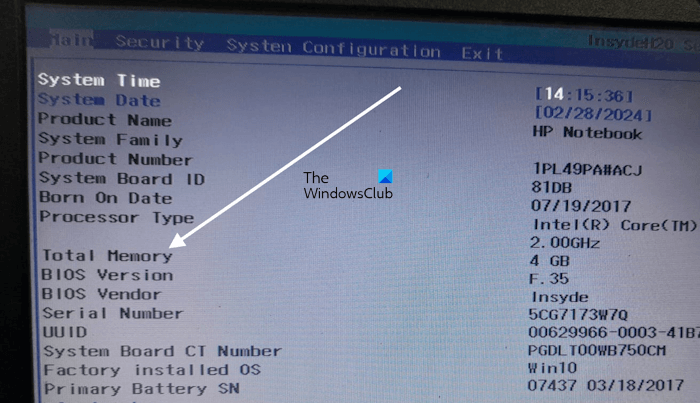
Computers of different brands have different dedicated keys to enter BIOS settings. Visit the official website of your computer manufacturer to know the right key to enter the BIOS settings. Once you are in your computer BIOS, look for system information to view the RAM information.
3] Reseat RAM
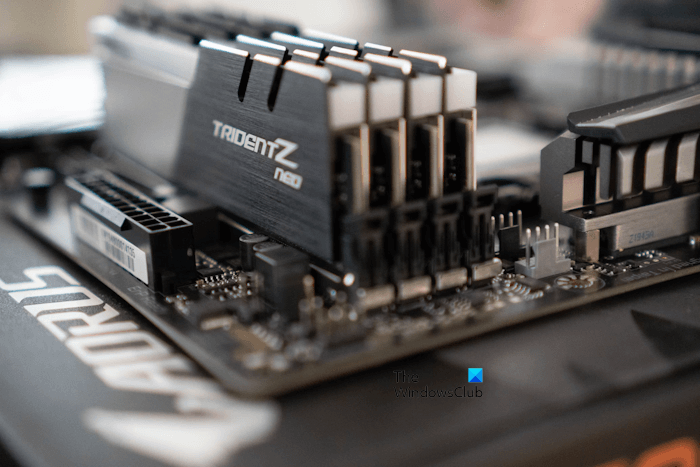
Make sure that all the RAM sticks are seated properly. The issues can occur if the RAM installation is not correct. Therefore, we suggest you remove all the RAM sticks and install them properly. Before installing the RAM sticks, clean your RAM sticks and RAM slots, as sometimes dust and debris inside the RAM slots stop the computer from detecting the RAM sticks.
4] Install RAM sticks in the correct order
Every motherboard has a different configuration for the RAM installation. You should follow the correct configuration while installing RAM. Otherwise, your computer will not recognize the installed RAM sticks. For example, if you have only two RAM sticks but your computer motherboard has 4 RAM slots, the RAM sticks should be installed in some particular RAM slots to be detected by your computer.
This information is available in the user manual of a computer motherboard. Refer to the user manual of your computer motherboard to know the correct order of RAM installation.
5] Check for memory limit
In Windows computers, you can limit the memory. If this limit is activated on your computer, it will detect only the maximum RAM specified in the memory limit. Check this by following the instructions mentioned below:
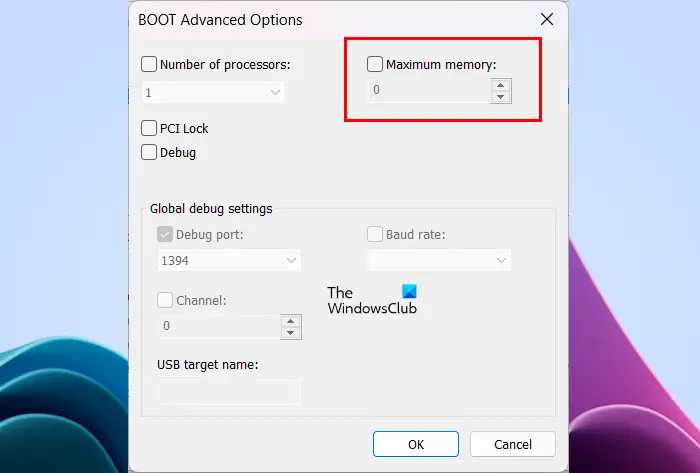
- Open the Run command box and type MSConfig.
- Click OK or press Enter.
- In the System Configuration window, go to the Boot tab.
- Click Advanced options.
- Uncheck the Maximum memory checkbox.
- Click OK to save the changes. Click OK again.
After completing the above steps, restart your computer. The issue should be fixed this time.
6] Update or reset the BIOS

We also suggest you update your BIOS to the latest version or reset the BIOS settings to default. To update your BIOS to the latest version, you can download its latest version from the official website of your computer manufacturer and then run the installer file with administrative rights.
7] RAM might be faulty
If despite trying all the above fixes, your computer fails to recognize the RAM stick(s), the RAM stick(s) may be faulty. You can check this by installing the RAM stick on another compatible computer motherboard (if available). If the RAM is faulty, replace it.
That’s it.
Why is only 8 GB of 16GB RAM usable in Windows 11?
The most common cause of this issue is memory limitation. If the memory limit is activated on your system, it will not detect all the RAM sticks installed on your computer. You can check this in the Advanced options in MSConfig. Another cause of this problem is the faulty RAM stick(s). However, if your RAM sticks are new, the chances of faulty RAM are less.
How do I fix usable RAM on Windows 11?
If the usable RAM is less on your system, close all the unnecessary applications running in the background. You can view the memory-hogging programs in the Task Manager. If you are not using them, close them. Clearing the RAM cache can also help reduce the RAM usage on a Windows PC.
Read next: Fix Wrong RAM Speed on Windows.